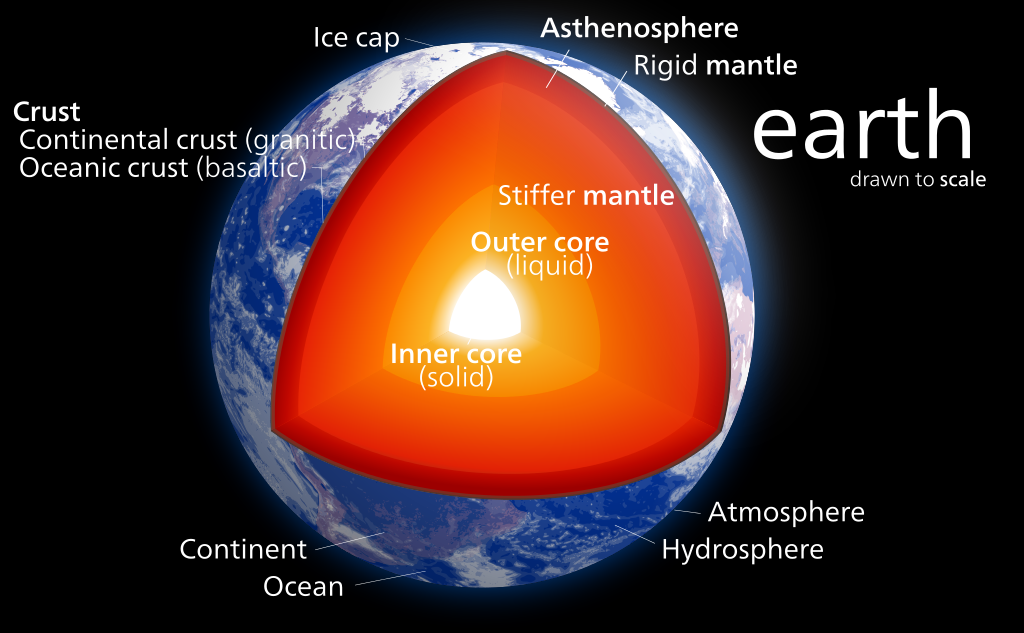Earth's Magnetic Field Almost Collapsed 565 Million Years Ago
Earth's magnetic field, which protects life from intense solar radiation, almost collapsed 565 million years ago, according to a study published Monday in Nature Geoscience.
If the magnetic field had collapsed, life on Earth would have faced severe challenges because the solar wind would likely strip the planet of its atmosphere and pelt the surface with harmful radiation.
Luckily, our planet's molten core probably began to solidify during the late Ediacaran period, according to the new paper. This recharged Earth's magnetic field right when it was at its weakest point. Now, a half-billion years later, Earth's magnetic field is ten times stronger than it was in was during this early era.
Scientists led by Richard Bono, a palaeomagnetism researcher at the University of Rochester, used ancient crystals from a site near the city of Sept-iles, Qui(C)bec, to reconstruct this timeline of Earth's inner core "nucleation," or solidification.
The Earth's core is thought to have been entirely liquid at some point, and the question of when it began to solidify has perplexed scientists for decades. Past estimates have ranged from 500 million years to 2.5 billion years ago. Bono's team now presents evidence that nucleation began after 565 million years ago.
 Model of Earth's interior. Image: Kelvinsong
Model of Earth's interior. Image: KelvinsongEarth's inner core is made of solid iron-nickel alloy that is hot as the surface of the Sun (around 5,430C). This nucleus is surrounded by a liquid outer core that powers Earth's magnetism with its convection cycles. The inner core is slowly growing by "freezing" molten iron and nickel to its mass, a process that pumps heat into the outer core and bolsters Earth's magnetic field.
Crystals were key to the researchers' study because Earth's magnetic field leaves its fingerprints in some minerals by influencing the direction and orientation of lattice formation. Researchers examined feldspar and pyroxene crystals from Ediacaran-aged rock near Sept-iles, which showed that the magnetic field was going haywire during the late Ediacaran by reversing its polarities 20 times faster than it does today.
These are signs of imminent geodynamo collapse, the team reported. The fact that the field got stronger after this time instead of collapsing suggests that nucleation began and gave Earth's dynamo the juice it needed to beef up the field.
The timeline proposed by Bono and his colleagues suggests that nucleation occurred just before the Cambrian explosion, a period of enormous evolutionary progress 541 million years ago that resulted in the rapid emergence of animal life.
Read More:Watch These Trippy NASA Visualizations of Space Magnetism
Evidence of weak magnetism in the late Ediacaran period has prompted some scientists to suggest that Earth was irradiated without a strong field, causing a major extinction event. The organisms that might have had an advantage during this time were mobile or hard-shelled species that could protect themselves from radiation, and they flourished at the onset of the Cambrian period.
Bono and his colleagues mention this speculative correlation, but note that there is no general consensus on whether the weak magnetic field is related to the Cambrian explosion
"The Ediacaran age of the ultra-low geomagnetic field intensity is intriguing," the authors write in the paper. "Suggestions that a decreased magnetic shielding had an effect on the profound changes in animal evolution that marked this, and the succeeding early Cambrian interval, are controversial."
It will take more research to refine our understanding of how and if fluctuations in Earth's magnetic intensity influenced the evolution of life. By offering convincing evidence to resolve the debate over the age of Earth's core, Bono and his colleagues have added a crucial piece to that puzzle.
Get six of our favorite Motherboard stories every dayby signing up for our newsletter.